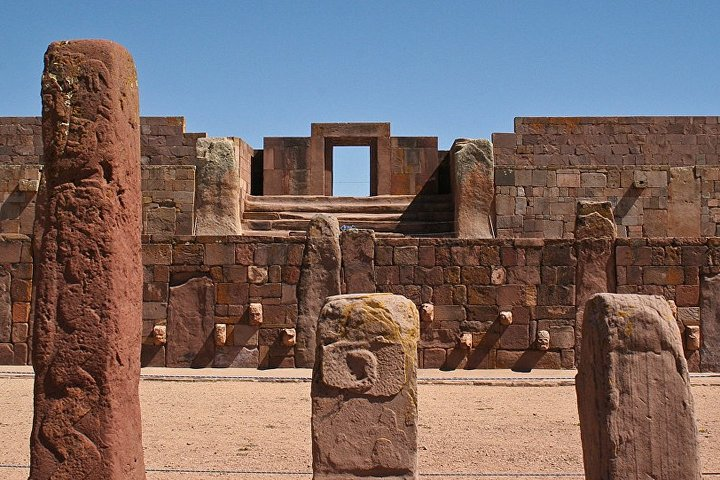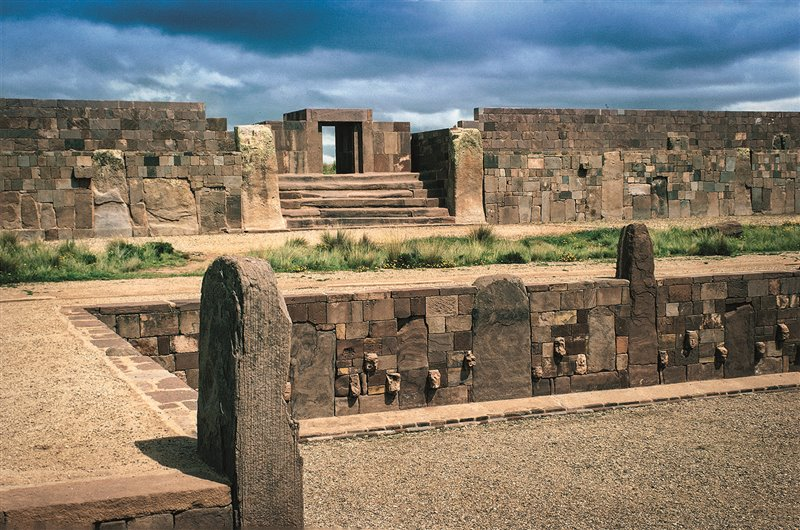
Tiahuanaku

Tiahuanaku (also spelled Tiwanaku) is one of the most significant archaeological sites in South America, located near the southeastern shore of Lake Titicaca in present-day Bolivia. It was the capital of a powerful pre-Inca civilization that flourished between 500 and 1000 AD. The site showcases advanced engineering and architectural skills, evident in its massive stone blocks, precise alignments, and complex drainage systems. Among its most notable structures are the Akapana Pyramid, the Kalassasaya temple, and the famous Gateway of the Sun, intricately carved with celestial and mythological symbols. These constructions reflect the Tiahuanaku people's deep understanding of astronomy, agriculture, and religion.
Tiahuanaku served as a major ceremonial and administrative center, influencing a wide region across the Andes. Its art and iconography, particularly depictions of the Staff God and other mythological figures, later influenced the Inca and other Andean cultures. Despite centuries of erosion, looting, and colonial destruction, the grandeur and mystery of Tiahuanaku continue to captivate researchers and visitors alike. Recognized as a UNESCO World Heritage Site, Tiahuanaku stands as a testament to the ingenuity and spiritual depth of one of the Andes’ earliest urban civilizations.
Logistics:
Tiahuanaco, also known as Tiwanaku, is located approximately 70–72 kilometers (43–45 miles) west of La Paz, Bolivia. Traveling by private vehicle or taxi typically takes about 1 to 1.5 hours, depending on traffic conditions, especially through El Alto, which can be congested during peak hours . For a more economical option, minivans (locally known as "minibuses") depart from the General Cemetery area in La Paz. These minibuses cost approximately 15–20 Bolivianos (about $2–3 USD) one way and take around 1.5 to 2 hours to reach Tiahuanaco, making multiple local stops along the route


